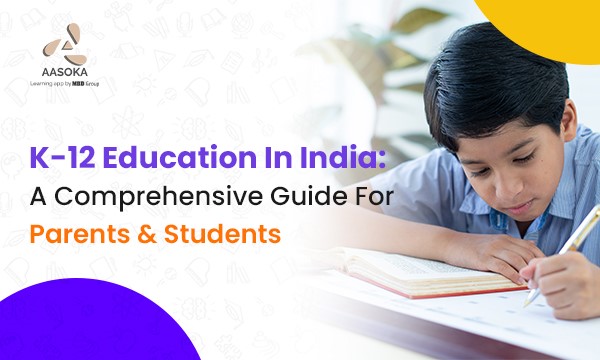
What is K-12?
K-12 refers to the educational system in which students study from kindergarten to 12th grade. It is a comprehensive curriculum that covers academic and non-academic subjects and is designed to prepare students for higher education and future careers. The schools teach a variety of subjects to provide students with a well-rounded education.
What is K-12 Indian education system?
In the current Indian education system, K-12 education refers to Kindergarten to the 12th grade. The first ten years of the system provide core education followed by two academic years that prepare the students for higher education in different fields.
The government of India has been taking continual steps to provide education and access to all children despite their backgrounds. The Right to Education Act of 2009 made education compulsory and free of charge for all children of ages 6-14.
What are the different levels of K-12?
In India, educational institutions typically divide the K-12 education system into four levels after Kindergarten. These are as follows:
Primary Level: Classes 1-5
Middle Level: Classes 6-8
Secondary Level: Classes 9 & 10
Senior Secondary Level: Class 11 & 12
Both government and private schools accept these levels. Each school follows a set curriculum, designed keeping in mind the cognitive and emotional level of the students at each level of schooling. The curriculum designers focus on not just academics but also co-curricular activities in a way that would help in the overall development of a student.
What subjects are studied in K-12?
As the world changes and the problems of the modern world come to surface, India’s K–12 education system aims to prepare students for facing these challenges head-on by providing a complete and holistic education. This extensive educational curriculum covers basic courses like maths, science, and social studies, along with language and art programs and includes extra-curricular activities such as sports and cultural programs.
Primary Education: Primary education covers the development of the fundamental language, mathematics, and science skills of the students. The teachers introduce students to subjects such as English, Hindi, Mathematics, Science, Social Science, and Environmental Science.
Middle & Secondary Education: Educational authorities in India design the secondary education system to provide students with a broad range of academic and vocational subjects. The curriculum includes subjects like Mathematics, Science, Social Science, Hindi, English, and a third language.
Senior Secondary Education: Designers of the senior secondary education system aim to prepare students for higher education and future careers. The curriculum includes a wide range of subjects such as Mathematics, Physics, Chemistry, Biology, History, Geography, Political Science, Economics, Business Studies, Accountancy, and a choice of electives like Computer Science, Psychology, and Sociology.
Examinations: Examinations play a crucial role in the K-12 education system in India. The primary and secondary education system follows a continuous evaluation system that involves regular assessments and examinations. The senior secondary education system has a more standardized examination pattern, with students appearing for board exams at the end of classes 10 and 12.
What are the benefits of K-12 education?
The system of K-12 education lays the foundation for students to develop and master academic as well as co-curricular skills. K-12 education is important for learning social skills like working together and communicating. It helps students make friends and find role models. The internet is also important for social skills. The system of K-12 education lays the foundation for students to develop and master academic as well as co-curricular skills. This is important for learning social skills like working together and communicating. It helps students make friends and find role models.
Schools that follow K-12 teach students to use technology to learn new things and help prepare students for jobs and make them better at working with different people. It helps them develop skills necessary for when they step out into the 21st-century world. The Indian education system keeps up with the trends in education to help equip its students with the necessary knowledge and skills to compete on a global level. The Indian education system follows a structure where the curriculum is divided into primary, middle, secondary, and senior secondary education. The government has also taken steps to ensure that children between the ages of 6-14 get compulsory free education. The students are introduced to basic subjects like maths, social science, science, and languages along with sports, art, dance, and others. The benefits of K-12 education include mastering academic and social skills, developing teamwork and communication, using technology to learn, and preparing for jobs.
